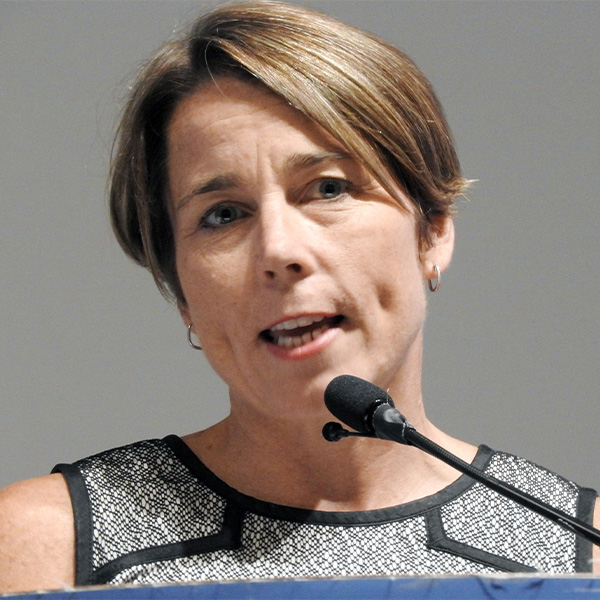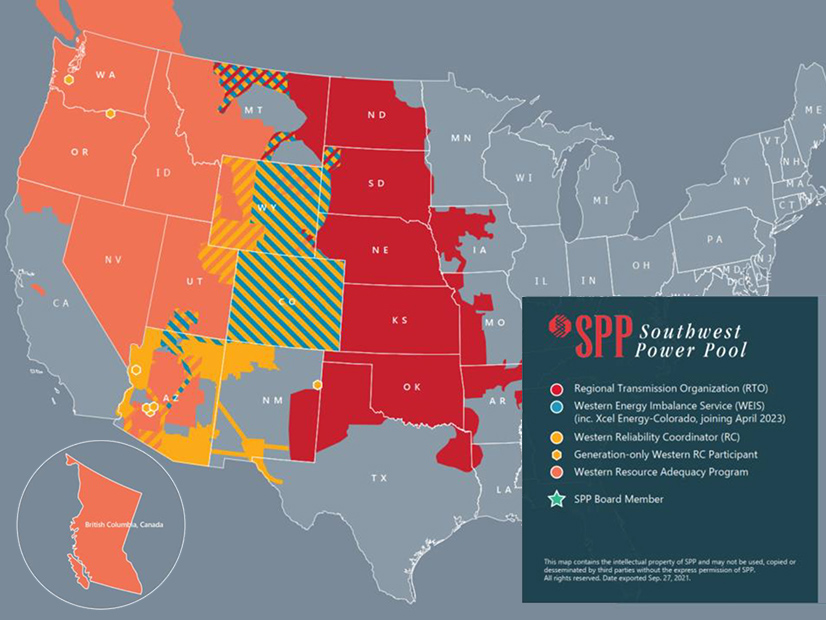California lawmakers are planning a new effort in 2023 to allow CAISO to become a multi-state RTO under conditions that have changed greatly since the last attempt failed five years ago, while the ISO is hoping to win approval for a day-ahead extension of its real-time Western Energy Imbalance Market, increasing its role in the West.
The potentially big changes come as California is contending with regionalization efforts by SPP, which plans to launch a Western version of its Eastern RTO, and the Western Power Pool, which is seeking FERC approval for its Western Resource Adequacy Program, a possible launchpad for an RTO.
Developments in the past five years are fueling the efforts, including strained grid conditions in Western heat waves, the need for new transmission to carry renewable power, legal mandates for Colorado and Nevada transmission owners to join RTOs by 2030, and more states adopting clean energy and emissions reduction targets.
Collaborating to meet those needs in organized markets would be far less expensive than going it alone, a number of studies have shown.
“There’s a strengthened recognition of the need to work together in the West and the benefits of working together,” CAISO CEO Elliot Mainzer said in an interview with RTO Insider.

| © RTO Insider LLC
Last year’s California Assembly Concurrent Resolution 188, authored by Assemblyman Chris Holden, chair of the Assembly Appropriations Committee, asked CAISO to report on studies of the benefits of regional markets by the end of February. The measure passed the state Senate and Assembly by unanimous bipartisan votes.
“This is an important precursor to what’s likely to be a legislative push in California’s legislature next year for broader governance reform,” Mainzer said in a Dec 13 meeting of the WEIM Governing Body. “We look forward to following up with Chair Holden in the early new year to start thinking about the timing and the coordination and the choreography of that important initiative.”
Holden, the former chair of the Assembly Committee on Energy and Utilities, authored bills in 2017 and 2018 to pave the way for CAISO to become a multi-state RTO, but those bills failed. He asked CAISO for the ACR 188 report to show lawmakers the value of regional cooperation.
Since 2018 “states across the West and utilities have adopted their own policies to achieve a clean resource mix and reduce greenhouse gas emissions, which are generally consistent with the policy direction of California,” Holden said in a statement on the bill. “Two states [Nevada and Colorado] have mandated participation in a West-wide market.
“As tens of thousands of megawatts of renewable resources are slated for development in the West, and thousands of megawatts of coal-fired resources are retired and continue to be shut down, momentum is building for greater regional coordination to ensure that electricity is available at all hours of the day,” Holden said. “Consequently, I think it’s time for California to revisit a broader regional market.”
Restarting the Conversation
In the interview with RTO Insider, Mainzer said, “We don’t have any specific details and certainly haven’t seen any legislative language … but we certainly think that Chair Holden, having led the earlier efforts on this a number of years ago, believes that the time is right for another examination of this issue. So, I think the 188 [report] was his effort to start getting folks engaged and get good information and good facts … and to start reinitiating that conversation.”
CAISO commissioned the National Renewable Energy Laboratory to produce the study in partnership with the ISO and California’s eight other balancing authorities, including the Los Angeles Department of Water and Power, the Balancing Authority of Northern California and PacifiCorp. CAISO had planned to release a first draft of the report before the end of 2022 but postponed it until mid-January to give the drafting team more time.
A stakeholder process in the fall identified 41 relevant studies on legal, technical and market issues. They included a study by CAISO in 2016 that it conducted pursuant to Senate Bill 350, a measure that declared the legislature’s intent to “provide for the transformation of [CAISO] into a regional organization to promote the development of regional electricity transmission markets in the Western states.”
The five members of CAISO’s Board of Governors are all Californians appointed by the governor and confirmed by the state Senate. Changing that to allow governors from other states would require legislative action, SB 350 noted. The bill told CAISO to study the potential impacts of becoming a multistate, regional organization before any governance changes could occur.
The SB 350 study found that “a larger ISO-operated regional market [could] create significant value to California ratepayers, decrease overall [greenhouse gas] emissions inside and outside of California, reduce environmental impact in California and elsewhere, increase jobs and economic activities in California and improve the conditions of California’s disadvantaged communities.”
The benefits to the state and the West “increase significantly with the expansion of the market footprint, reducing emissions and the costs associated with the integration of larger amounts of renewable generation resources,” it said.
Holden characterized the ACR 188 report as an update of the SB 350 study.
Another study published last year found an RTO covering the entire U.S. portion of the Western Interconnection could save the region $2 billion in annual electricity costs by 2030 and cut carbon dioxide emissions by 191 million metric tons. A group of Western states led the study, which was financed by the U.S. Department of Energy. (See Study Shows RTO Could Save West $2B Yearly by 2030.)
Other studies identified for the ACR 188 report looked at the potential effects of regionalization on resource adequacy and transmission development.
Kellie Smith, a special consultant to Holden hired to work exclusively on Western regionalization in 2023, said the “critical question and the primary focus of ACR 188 is, ‘Is it good for California?’ Mr. Holden thinks the results are going to say, yes, it’s needed.”
“Since 2018, the perspectives and momentum are building,” Smith said in an interview. “I think it’s pretty obvious that the ISO has the best system around. It’s been working on integration and renewables and [greenhouse gas] tracking for years. The others just don’t have that. So, it makes a lot of sense for the ISO to be the lead” in Western market formation.
A bill to accomplish that, she said, would probably be similar to Assembly Bill 813, which Holden introduced in 2017 and advocated for until it languished in the Senate Rules Committee at the end of the 2017/18 legislative session. The measure passed by a vote of 74-0 in the Assembly and cleared three Senate committees. It never reached a Senate floor vote because some key lawmakers worried it could relinquish control of CAISO to out-of-state interests and jeopardize the state’s climate agenda. (See CAISO Expansion Bill Dies in Committee.)
AB 813 would have instructed CAISO to continue to develop a proposal, originally drafted in 2016, to establish a two-step process for selecting regional board members including a “stakeholder-based nominating committee that selects nominees with the assistance and support of a professional search firm and an approval committee, consisting of the voting members of [a] Western states committee, which would confirm each slate of nominees.”
The Western states committee would have included representatives from each state with transmission owners in CAISO.
The process for selecting members of the CAISO Board of Governors would have then been similar to the process for selecting members of the WEIM’s Governing Body, which includes members from California and other Western states.
The WEIM, which spans much of the Western Interconnection, has been popular with other states, in part, because of its inclusive governance and CAISO’s efforts to share power over WEIM matters with the market’s Governing Body. In contrast, energy leaders from across the West have said they would not join a CAISO-led RTO controlled by California politicians.
EDAM Moves Forward
The other major effort to broaden CAISO’s reach across the West in 2023 is its proposal for an extended day-ahead market (EDAM) for the WEIM. CAISO has promoted the EDAM this year as a way to bring greater cooperation to the balkanized Western Interconnection, which has 38 balancing authorities.
As a real-time-only market, the WEIM has produced more than $3 billion in benefits for its participants since 2014. The real-time market, however, represents only a fraction of the Western market. The day-ahead market is much larger.
The EDAM could generate $1.2 billion a year in benefits, or 60% of the savings of a West-wide RTO, if it encompassed the entire U.S. portion of the Western Interconnection, a new study commissioned by CAISO and performed by consultant firm Grid Strategies found. (See West Could Save $1.2B a Year in CAISO EDAM.)
CAISO fast-tracked the EDAM stakeholder initiative in 2022 amid competition for Western market share by SPP, which is pursuing its own day-ahead Markets+ program in addition to its RTO West. It published the final EDAM plan Dec. 7 and expects to seek approval from its Board of Governors and the WEIM Governing Body in February. The plan will also require FERC approval. (See PacifiCorp to Join EDAM, Final Plan Released.)
“An amazing amount of hard work and robust stakeholder engagement are coming to fruition with publication … of our final extended day-ahead market design,” Mainzer said in his year-end written report to the CAISO Board of Governors and WEIM Governing Body. “The strong stakeholder participation and engagement have helped shape the design through its various iterations, and we are committed to working with stakeholders in making any necessary adjustments that might be needed once the market is up and running.”
“We want to go and see some big things happen in 2023,” Mainzer said.



